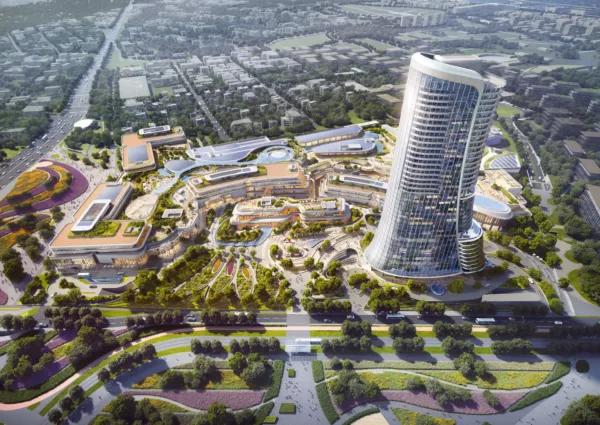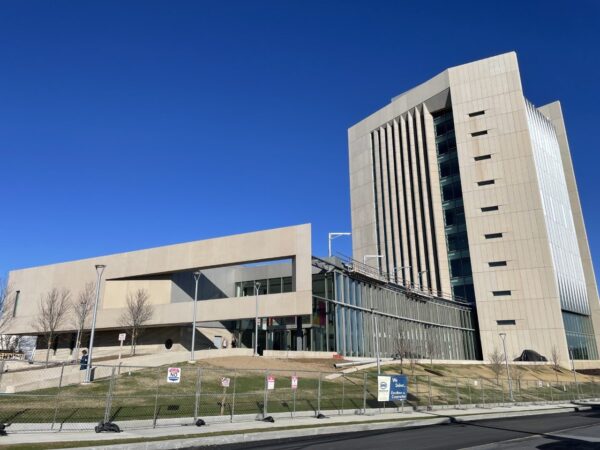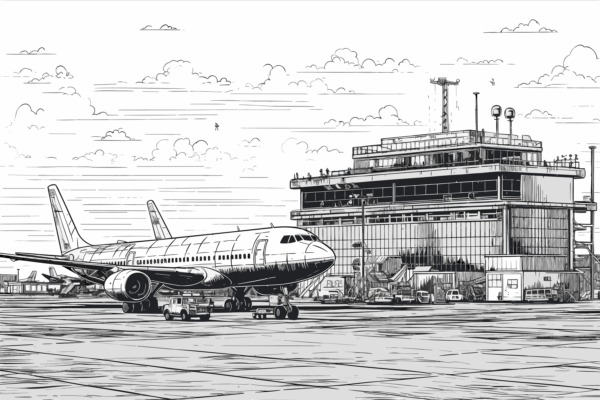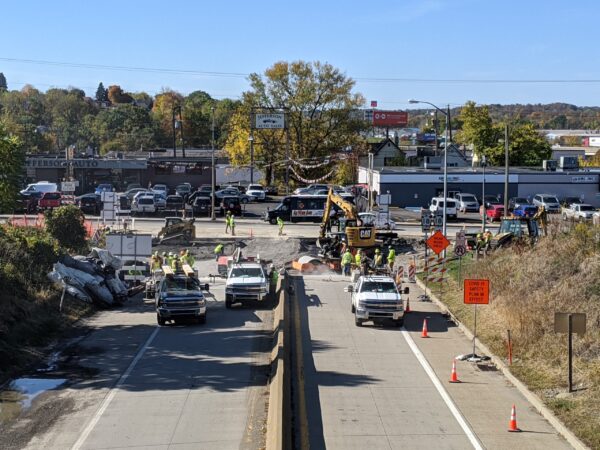

Hill International’s growing global expertise in the transportation (airports) sector received another boost recently, when it successfully handed over the renovation and development of Terminal Building 2 at the Cairo International Airport in Egypt. Construction work ended July 12, with testing, commissioning and snagging being completed September 3 for the new facilities that will double the terminal’s passenger-handling capacity to 7.5 million each year. “This project will have a very positive impact on business, tourism and the overall economy,” commented Waleed Abdel Fattah, Hill’s senior vice president of North Africa, adding that, as part of a soft opening, four flights already started operations using the new terminal building on September 28. Abdel Fattah’s statements come after the Cairo Airport Company awarded Hill a 15-month, $1.9 million contract in 2014. Hill is providing project management consultancy services for the Terminal Building Number 2. Estimated to cost $500 million, the project involved renovation of the existing terminal building, the construction of new buildings, including a new departure hall, a new airside pier and a major upgrading and extension of the airside and landside pavements. Three new buildings – designated as Building A, Building B and Building C – have been built with total floor space of 66,586 sq meters, 115,458 sq meters and 38,937 sq meters, respectively. The project also included an airside hotel with 40 guest rooms, a baggage-handling system of capacity 3,000 bags per hour, seven reclaim carrousels, a baggage sorting area over 45,000 sq meters and aprons and taxiways and roads over 357,182 sq meters, Hill International had 15 professionals and experts working full time on the project during the peak period, with five staffers as the home office support, he said.
Deemed as the second busiest airport in Africa, after the OR Tambo International Airport in Johannesburg, the Cairo Airport is currently served by three terminals with Terminal 2 inaugurated in 1986 with seven boarding gates. Due to growing inbound tourism, a need to replace ageing facilities and expand its current capacity of 3.75 million passengers a year, an initiative was first launched in 2010 under the Cairo Airport development project to overhaul the terminal. Besides adding new boarding gates, the terminal was planned to include larger and more modern retail areas and also offer facilities to handle the Airbus 380 aircraft, Abdel Fattah said. Upon completion, passengers will enjoy a highly modern terminal offering international standard service levels and more passenger conveniences, including large retail areas and lounges. “Renovation and refurbishment of Terminal 2 also includes information and communication technology (ICT) and baggage handling system (BHS) that are being used for the first time in Egypt. The Terminal’s strategic objective was to upgrade the Egyptian Airports level of security to international standards,” he said. For Hill International, successful completion of the terminal work sustained the company’s ability to accomplish complicated, strategic and fast-tracked projects under harshest conditions. “We assumed project management responsibilities from another project management firm on Sep 1, 2014 when the project was 31% complete (over three years) with an extremely troubled work environment. Hill implemented advanced project management methodologies that drove the project to an acceptable completion,” Abdel Fattah said, noting Hill’s services included applying methodologies related to risk management, schedule management, quality management, contract administration, cost management and claims analysis.
Project challenges
“Terminal Building 2 was a strategic project and the time schedule and progress performance were under close monitoring by top-level authorities. For us, clear communication with all stakeholders was a key element in the stakeholders’ engagement facilitation tool and we developed and delivered more than 32 progress presentations to key stakeholders and steering committees and also submitted 26 monthly reports, 15 special reports and 80 weekly reports,” he said. Hill also helped to ensure the practicality and applicability of the project time schedule which increased the level of confidence in project completion dates and forecast. To ensure that the project schedule was maintained, Hill developed the required analysis to ensure resources were available on site and the delivery of long lead items was interfaced with construction activities. Hill also directed the contractor to properly fulfil the required resource utilization based on the approved schedule and in line with Hill’s schedule risk management policy. “The schedule was subject to different categories of risks and we coordinated numerous workshops with project stakeholders to develop a proper project risk framework that accurately calculated the level of confidence for project estimations,” Abdel Fattah said, pointing out that the results of the analysis were periodically communicated with relevant stakeholders with the recommended corrective actions.
With more than 500,000 tourist arrivals each year to Egypt, a figure forecasted to increase due to a planned uptick in its economy, the Cairo International Airport will likely receive more attention from both the government and international funding agencies. Terminal Number 1 was built in the early 1970s and renovated in 1994. But there are renovations and refurbishments planned for the terminal and also the Airport City project that Hill will likely be bidding so that it can offer a wide range of project and construction management services, Abdel Fattah said.
By Ashok Dutta
Share

April 11, 2024 | Articles
A Model Move: Managing Move-In at the Sylvia H. Rambo U.S. Courthouse

April 8, 2024 | Articles

April 4, 2024 | Articles
Driving Growth and Seizing Opportunity: Lukasz Marcinkiewicz Joins Hill as Country Manager, Poland

April 1, 2024 | Articles

March 27, 2024 | Articles
Building the Future: Women’s Leadership and Community Engagement in the Construction Industry

March 25, 2024 | Articles
Leveraging Data Analytics and Dashboards for Enhanced Project Performance

February 26, 2024 | Articles
Continuity, Creativity, and Collaboration: Delivering PennDOT’s Route 18 Signal Upgrade
We and use cookies and other tracking technologies to improve your experience on our website. We may store and/or access information on a device and process personal data, such as your IP address and browsing data, for personalised advertising and content, advertising and content measurement, audience research and services development. Additionally, we may utilize precise geolocation data and identification through device scanning.
Please note that your consent will be valid across all our subdomains. You can change or withdraw your consent at any time by clicking the “Consent Preferences” button at the bottom of your screen. We respect your choices and are committed to providing you with a transparent and secure browsing experience.
| Cookie | Duration | Description |
|---|---|---|
| cookielawinfo-checbox-analytics | 11 months | This cookie is set by GDPR Cookie Consent plugin. The cookie is used to store the user consent for the cookies in the category "Analytics". |
| cookielawinfo-checbox-functional | 11 months | The cookie is set by GDPR cookie consent to record the user consent for the cookies in the category "Functional". |
| cookielawinfo-checbox-others | 11 months | This cookie is set by GDPR Cookie Consent plugin. The cookie is used to store the user consent for the cookies in the category "Other. |
| cookielawinfo-checkbox-necessary | 11 months | This cookie is set by GDPR Cookie Consent plugin. The cookies is used to store the user consent for the cookies in the category "Necessary". |
| cookielawinfo-checkbox-performance | 11 months | This cookie is set by GDPR Cookie Consent plugin. The cookie is used to store the user consent for the cookies in the category "Performance". |
| viewed_cookie_policy | 11 months | The cookie is set by the GDPR Cookie Consent plugin and is used to store whether or not user has consented to the use of cookies. It does not store any personal data. |


